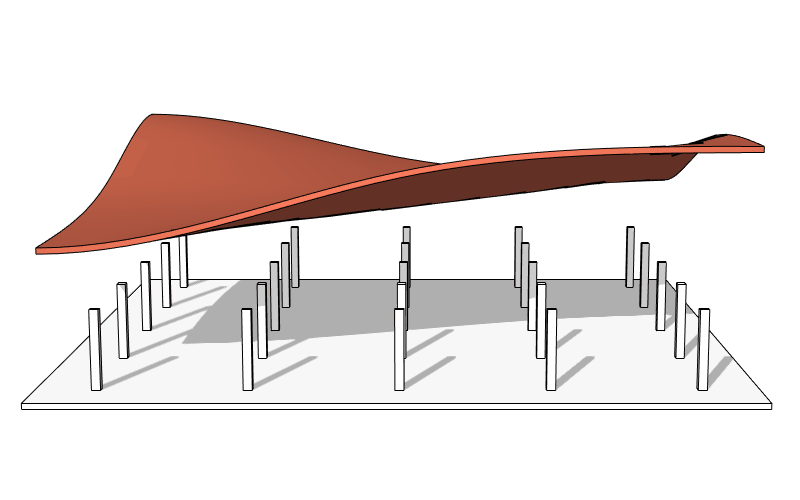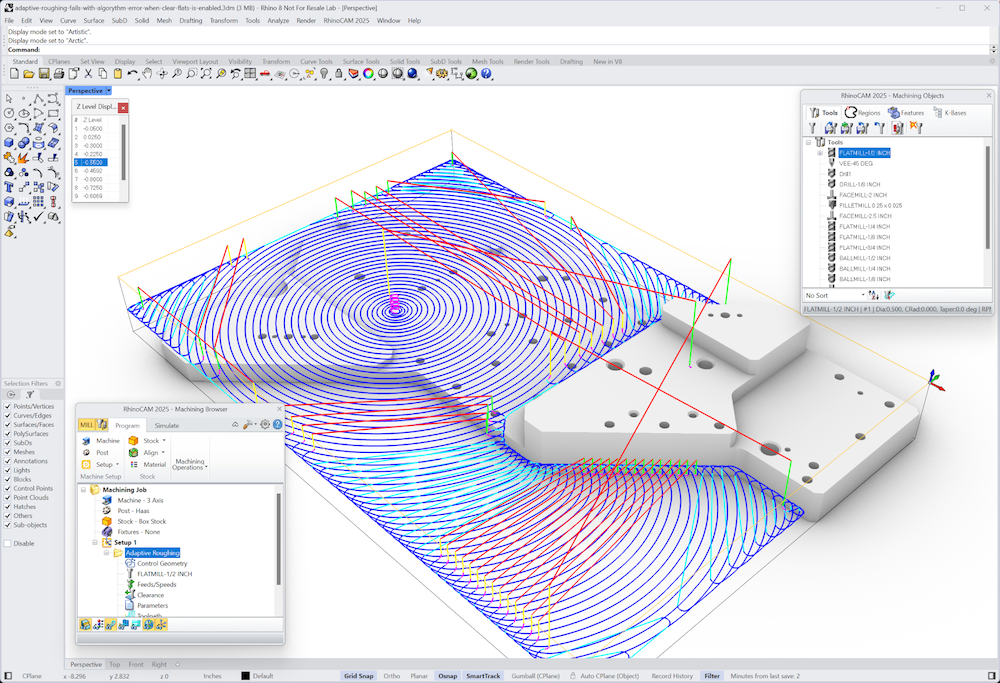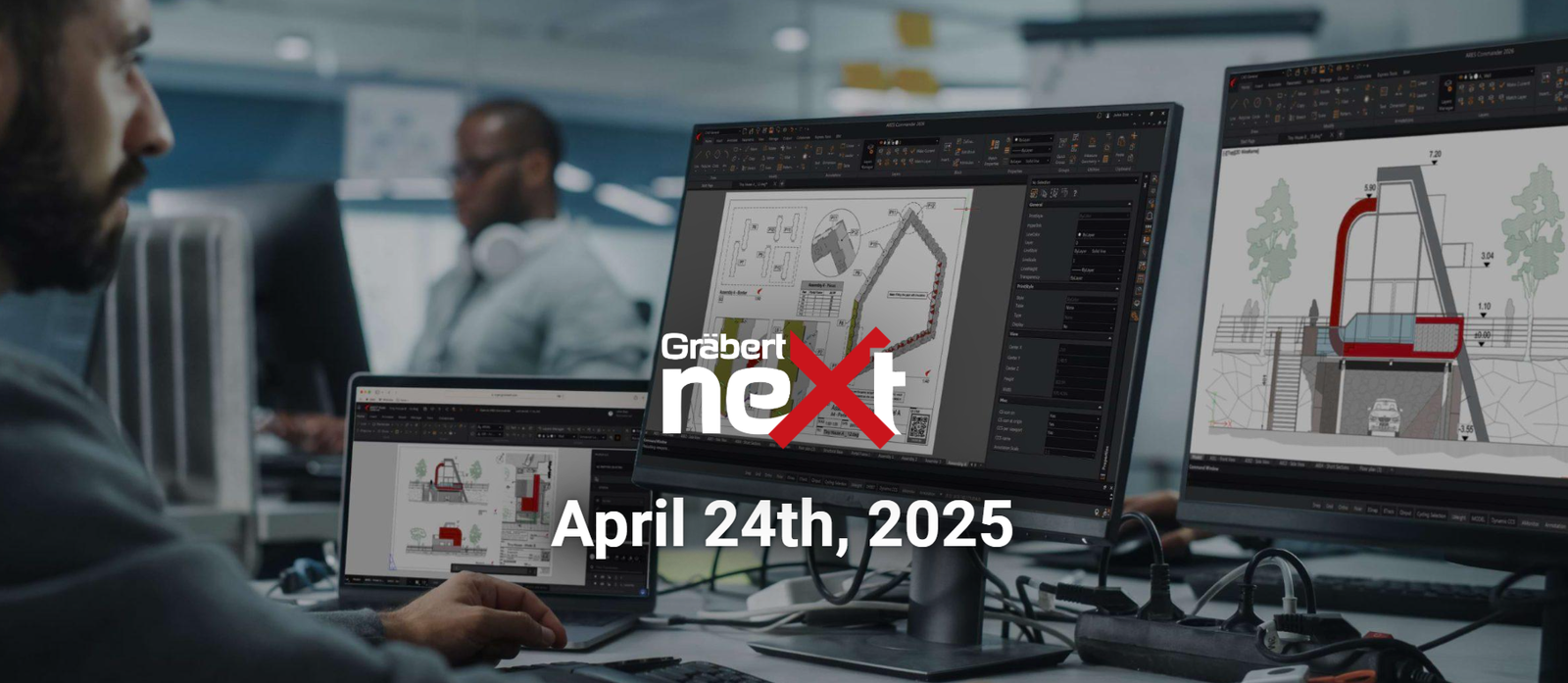Your Cart is Empty
Customer Testimonials
-
"Great customer service. The folks at Novedge were super helpful in navigating a somewhat complicated order including software upgrades and serial numbers in various stages of inactivity. They were friendly and helpful throughout the process.."
Ruben Ruckmark
"Quick & very helpful. We have been using Novedge for years and are very happy with their quick service when we need to make a purchase and excellent support resolving any issues."
Will Woodson
"Scott is the best. He reminds me about subscriptions dates, guides me in the correct direction for updates. He always responds promptly to me. He is literally the reason I continue to work with Novedge and will do so in the future."
Edward Mchugh
"Calvin Lok is “the man”. After my purchase of Sketchup 2021, he called me and provided step-by-step instructions to ease me through difficulties I was having with the setup of my new software."
Mike Borzage
Interview with Lou Gallo, SolidWorks Power User and CAD Podcaster
May 27, 2009 6 min read

In the past, if someone asked me to come up with improbable or strange combinations of technologies I would have suggested things such as 3D animations and Twitter or CAD and podcasts. I have since learned that if something looks improbable or strange to me it doesn’t mean it’s impossible or even wrong. Tackling those apparently impossible combinations requires both vision and determination, qualities which characterize Lou Gallo, the SolidWorks Power User who started a regular podcast about SolidWorks.
Not only is Lou Gallo proving the combination of a CAD podcast possible, he is also showing how this combination can be successful. While listening to his podcast in the morning drive to work, it becomes obvious that podcasting about SolidWorks makes perfect sense, but who could have seen this opportunity? I honestly didn’t. Here is my interview with Lou to understand how he does it.
Lou can you tell us a bit about yourself and your professional activities?
I began listening to podcasts, mostly on tech, in 2004…
Sure. I am a mechanical engineer from Wisconsin with a background in robotics and automation systems. My interest in CAE tools began in college. After graduation, I began working in the mechanical and semiconductor industry and am currently with Digital Dimensions, a SolidWorks reseller in Arizona, San Diego, Fresno and Sacramento. I have been in the CAD industry now since 2001 and enjoy visiting customers and helping solve problems within engineering and design. I began listening to podcasts, mostly on tech, in 2004 and realized that I wanted to provide tech content of my own back to the SolidWorks community. I started my own podcast in January of 2006. The podcast is now joined by a blog and a Twitter-like community called THE HEaRD. I have always been a bit of a technology junky so I tend to spend time discovering new technologies in web-based applications and CAD related tools.
While podcasting might seem to be an odd option for a graphic and visual context such as CAD, your success proves opposite. How did you get started, and how do you involve people?
[podcasting] can be challenging in selecting a topic that will not require a visual aid
This is a common question I am asked, but when I started the podcast, my goal was to provide SolidWorks and tech related content that users could take on the go. Since most of my podcast listening was done in the car on my commute to work, I figured this was a space that could be filled by news and tips on a CAD tool used not only by my customers, but any SolidWorks user worldwide. It can, however, be challenging in selecting a topic that will not require a visual aid like a blog or video. Another goal of mine is to bring awareness as well as useful tips, so if after listening you try or lookup how a feature or tool works, I have done what I set out to do. As far as involving the listenership, I try to get them to interact on THE HEaRD or Twitter, however I get a fair amount of interaction thru email and comments through the website.
Based on your experience, what are the main differences between a blog and a podcast from the end user point of view? What type of content fits best for each of the two channels?
It is all about the enclosure. A blog is really no different than a podcast as far as the “feed”, except a podcast has an enclosure or something that the reader can then take with them. In my case, that is an MP3 which they can either listen to from the website, be consumed through an RSS reader, or more commonly through a podcatching client like iTunes. By publishing my content to my website, the user can choose to consume the content from the web, leave comments and read the show notes, just like a blog, or have it delivered automatically by subscribing. I started doing a blog as well since there were topics that required that platform to best communicate certain topics (pictures and/or video).
How do you interact with your listeners? What type of feedback are you getting from them?
I encourage my listeners after every show to send me feedback via email, comments, or the micro-blogs (Twitter or THE HEaRD). I get feedback from all of these outlets.
What did you learn moving from listener to author?
the first couple of shows took an hour to record a 5 – 10 minute show
Great question. A lot! Before my interest in podcasting, my audio recording experience could be summed up in three words, Windows Sound Recorder. I had been recording webcasts live and using video capture software but never mixed in music or tried to fade in/out transitions before. This took a lot of research to learn what equipment to use (mics and mixers) and what software was the best to use for recording. The other issue was the RSS creation. When I started there were very few people that podcasted and most were technical so building the feed was typically a manual process which I did in Notepad. This made it a lot of work but it was educational and helped me find a better workflow to get shows recorded and posted. The first couple of shows took an hour to record a 5 – 10 minute show, then an additional hour or so to get all the posting and feed creation done. Today a 20-30 minute show takes me about 45 minutes to an hour to record, write show notes and post!
Can you describe your audience, for instance – how large is it? Where are they located? What is their professional level?
the podcast has gotten over 100,000 downloads
The podcast has gotten over 100,000 downloads since I launched and the monthly downloads seem to be increasing as podcast awareness grows. I started this solely due to my love of the recording technology and my desire to share my SolidWorks and tech knowledge with the community. The size of my audience is really not important to me as long as I know I’m helping people.
The reach of the show is worldwide. A majority of the listeners are in the US & Canada but I have listeners across the globe in Europe, Asia, and Australia.
How do you select the content you provide to your subscribers?
Since 1-2 shows a month relate to tech news or new technologies, the industry will provide me content to cover. On the SolidWorks front, since so many of us use CAD tools a certain way every time, we tend to get into ruts. I try to choose new toolsets or useful tools that are typically missed by most users. I also spend time covering new toolsets as well as products released on the SolidWorks Labs site. I will occasionally get groups of Bloggers together to chat about tech topics and do a 15+ part series each year covering the What’s New for new releases of SolidWorks. I have recently gotten into doing live coverage of events like SolidWorks World and COFES 2009. I am always interested in feedback or topics for future shows and will cover that when requests are sent in.
What type of integration do you have among Podcast, Twitter, and your blog?
The podcast is a weekly show which I have published every week since 1/1/06. It can be found in iTunes, but it is fed through Feedburner, so any mechanism that people have to download blog/podcast feeds will work. I also have links go out in my HEaRD account which echos to Twitter (@gol10dr). All podcasts are posted on my site along with their show notes at http://solidworksheard.com/podcast so listeners can leave feedback through the comment system. However they can also find me here at Novedge as well! Thanks Franco for the interview and the work you do at Novedge!
In my opinion CAD systems such as SolidWorks have been affected only marginally by the Internet and Internet technologies. What is your opinion and which web technologies and tools are more likely to have an impact on CAD systems from the end user point of view?
I am a huge fan of web applications and their success is typically enhanced by offering their users a local experience
I agree. In general most Desktop CAD systems are only marginally affected by Internet technologies but that is going to change as web-based applications become more ubiquitous. I am a huge fan of web applications and their success is typically enhanced by offering their users a local experience or Desktop integration. As design teams become more global, these web-based technologies are going to offer a bridge to unifying concurrent engineering efforts by allowing real time communication and data sync.
Tools are emerging now that allow in-CAD conversation like Vuuch Discussions but even tools like GoToMeeting are bringing remote teams closer and allowing real-time interaction that local design departments have at their dispose. Social technologies are also allowing engineers to get ideas and feedback right from the customer so this is an exciting time to be an engineer.
I would like to thank Lou for taking the time to answer my questions. If you have any questions for Lou or for Novedge, please leave a comment below and we will be glad to answer.
Franco Folini
Also in NOVEDGE Blog

Enhance Your Designs with VisualARQ 3: Effortless Geometry Extensions for Walls and Columns
April 30, 2025 8 min read
Read More
MecSoft Unveils RhinoCAM 2025 and VisualCAD/CAM 2025 with Enhanced Features
March 08, 2025 5 min read
Read MoreSubscribe
Sign up to get the latest on sales, new releases and more …



